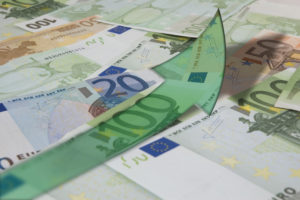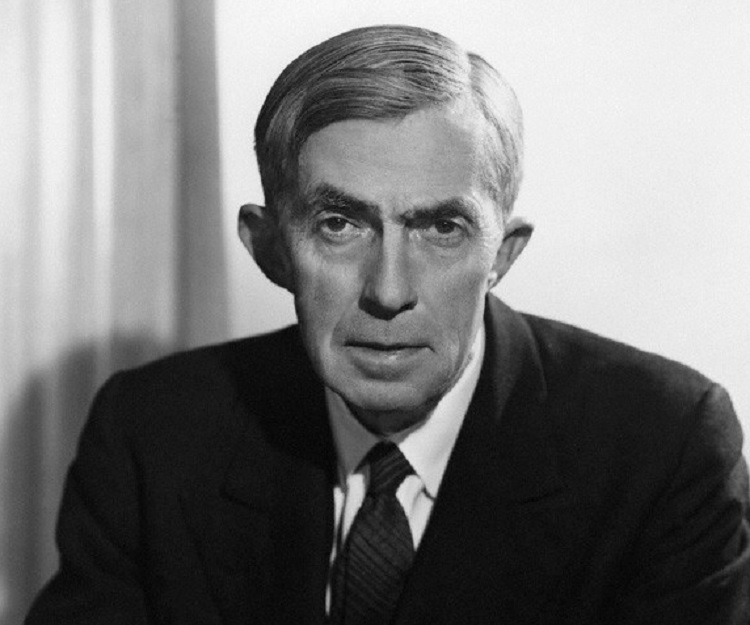
Roy F. Harrod
1900-1978

Roy Harrod is credited with getting twentieth-century economists thinking about economic growth. Harrod built on Keynes’s theory of income determination. The Harrod-Domar model (named for Harrod and Evsey Domar, who worked on the concept independently) is explained in Towards a Dynamic Economics, though Harrod’s first version of the idea was published in “An Essay in Dynamic Theory.”
Harrod introduced the concepts of warranted growth, natural growth, and actual growth. The warranted growth rate is the growth rate at which all saving is absorbed into investment. If, for example, people save 10 percent of their income, and the economy’s ratio of capital to output is four, the economy’s warranted growth rate is 2.5 percent (ten divided by four). This is the growth rate at which the ratio of capital to output would stay constant at four.
The natural growth rate is the rate required to maintain full employment. If the labor force grows at 2 percent per year, then to maintain full employment, the economy’s annual growth rate must be 2 percent (assuming no growth in productivity).
Harrod’s model identified two kinds of problems that could arise with growth rates. The first was that actual growth was determined by the rate of saving and that natural growth was determined by the growth of the labor force. There was no necessary reason for actual growth to equal natural growth, and therefore the economy had no inherent tendency to reach full employment. This problem resulted from Harrod’s assumptions that the wage rate is fixed and that the economy must use labor and capital in the same proportions. But most economists now believe that wage rates can fall when the labor force increases, although they disagree about how quickly. And virtually all mainstream economists agree that the ratio of labor and capital that businesses want to use depends on wage rates and on the price of capital. Therefore, one of the main problems implied by Harrod’s model does not appear to be much of a problem after all.
The second problem implied by Harrod’s model was unstable growth. If companies adjusted investment according to what they expected about future demand, and the anticipated demand was forthcoming, warranted growth would equal actual growth. But if actual demand exceeded anticipated demand, they would have underinvested and would respond by investing further. This investment, however, would itself cause growth to rise, requiring even further investment. Result: explosive growth. The same story can be told in reverse if actual demand should fall short of anticipated demand. The result then would be a deceleration of growth. This property of Harrod’s growth model became known as Harrod’s knife-edge. Here again, though, this uncomfortable conclusion was the result of two unrealistic assumptions made by Harrod: (1) companies naïvely base their investment plans only on anticipated output, and (2) investment is instantaneous. In spite of these limitations, Harrod did get economists to start thinking about the causes of growth as carefully as they had thought about other issues, and that is his greatest contribution to the field.
Harrod was a close colleague of Keynes, and his official biographer. The Life of John Maynard Keynes was a second, and only slightly less theoretical, product of Harrod’s long association with Keynes.
Born in Norfolk, England, Roy Harrod graduated from New College, Oxford. After spending a term at King’s College, Cambridge, where he came in contact with Keynes, Harrod returned to Oxford to administer and teach at Christ Church College until his retirement in 1967. Assar Lindbeck, the chairman of the Nobel Prize Committee, wrote that Harrod would have been awarded a Nobel Prize if he had lived longer. The backlog of other economists awarded the Nobel Prize caused Harrod to miss getting it.
About the Author
David R. Henderson is the editor of The Concise Encyclopedia of Economics. He is also an emeritus professor of economics with the Naval Postgraduate School and a research fellow with the Hoover Institution at Stanford University. He earned his Ph.D. in economics at UCLA.
Selected Works
Related Entries
Related Links
Robert Solow on Growth and the State of Economics, an EconTalk podcast, October 27, 2014.
